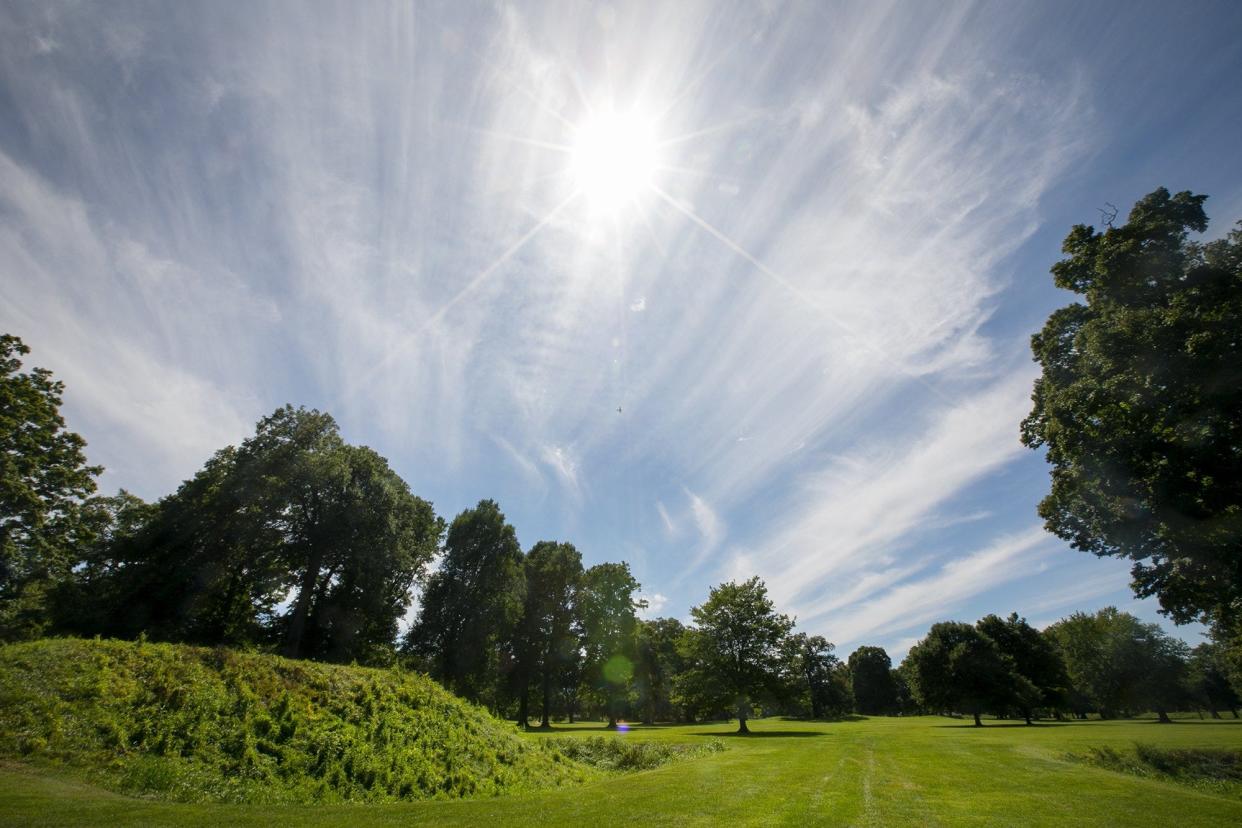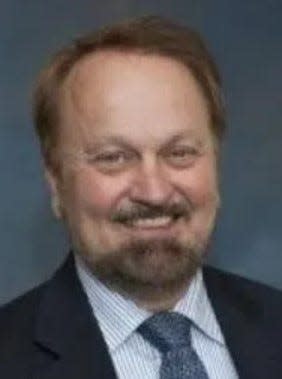As UNESCO considers Newark Earthworks for World Heritage List, a reminder of how we got here

Friends of mine, some at the Ohio History Connection and some among the Native American tribes who were removed from Ohio to Oklahoma in the 19th century, will soon be in Saudi Arabia to witness more than 150 nation states as they vote on adding eight Hopewell Ceremonial Earthworks sites in Ohio to the United Nations Educational, Scientific and Cultural Organization (UNESCO) World Heritage List —. Those sites include the Newark Earthworks and the Great Circle Earthworks in Heath.
I am reminded of two visits I experienced that helped bring us to this point.
In late 1999, Amos Loveday, who was Ohio’s state historic site manager, visited me at the Ohio State University's Newark campus. He wanted to interest me in taking my classes to visit the John Glenn museum. On his way out, I said, “If I was Ohio’s state historic preservation officer, I would find a way to remove the (Moundbuilders) Country Club from the Octagon.”

Two months later, Overday returned to say that he agreed with me, and asked if I knew others who would be supportive. Brad Lepper, Jeff Gill and I then called for a public meeting, which led to the beginning of a group that called itself the "Friends of the Mounds" and included the leadership of both the Native American Indian Center of Central Ohio in Columbus and the Native American Alliance in Holmes County.
Roughly six years later, by which time Ohio State University at Newark had created the Newark Earthworks Center, Glenna Wallace, Chief of the Eastern Shawnee Tribe of Oklahoma, came to the campus to attend a lecture by an historian who had written about Tecumseh, the great Shawnee Chief. None of us at OSU Newark knew of her to invite her but she knew of the lecture and came of her own accord. We took our guest speaker to the earthworks the day after the lecture and Glenna came with us.
Glenna was a college professor before she became the chief of her tribe. She taught elocution. At one point in her life she had spent her summers travelling with Chataqua and teaching the public about her tribe. She had studied the history of Indians in Ohio in order to do that, but nothing she had read had told her anything about the Newark Earthworks.
Some months after her visit, Glenna returned to Newark for a week as a guest speaker in an OSU course on the earthworks. During that week, Burt Logan, the new director of the Ohio History Connection, which owns the Newark Earthworks, asked to meet her. He brought Brad Lepper to that meeting, and she brought Marti Chaatsmith and I from the Newark Earthworks Center. Glenna has since become an important adviser to the Ohio History Connection. All of the OHC leadership have visited her in Oklahoma, and she has connected them with all five of the tribes that were removed from Ohio to Oklahoma in the 19th century. Today, OHC works closely with these tribes, and all of them are influential in the effort to make the earthworks fully open to the public.
It has been more than two hundred years since these tribes were removed from Ohio to Oklahoma so that westward-moving Americans settlers of European descent could take over the territory. More than 500 ancient mounds built by their ancestors have been destroyed. However, nearly a century ago citizens of Newark, Ohio, voted to raise their own taxes to purchase the Octagon and preserve it. They made it a training ground for the Ohio National Guard and, after that, a golf course.
It is time the tribes have been reconnected with our state, and time the earthworks become fully public so that the world can visit this amazing American Indian site.
Richard Shiels is an emeritus associate professor of history and founding director of Ohio State University's Newark Earthworks Center
This article originally appeared on The Columbus Dispatch: As UNESCO vote nears, earthworks should be fully public, Shiels says

